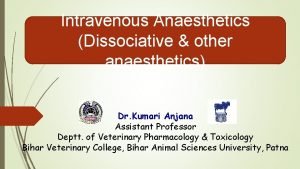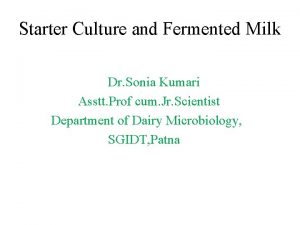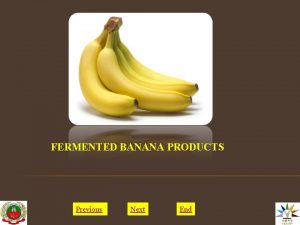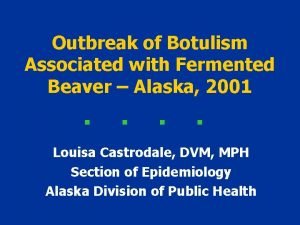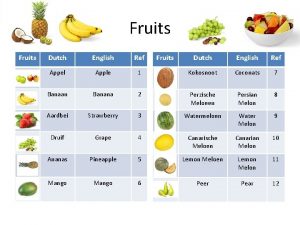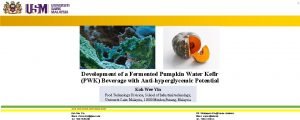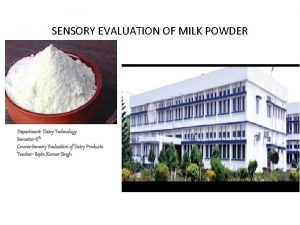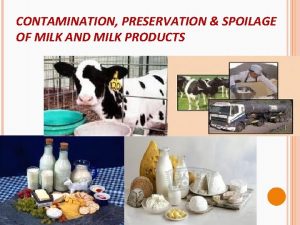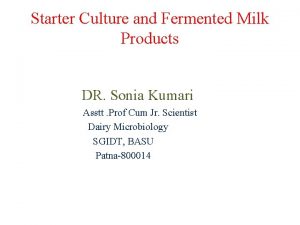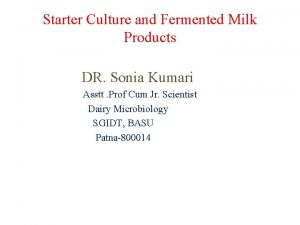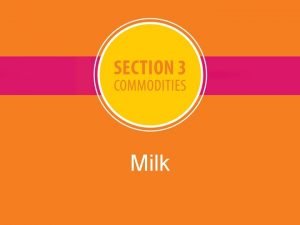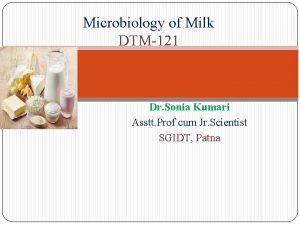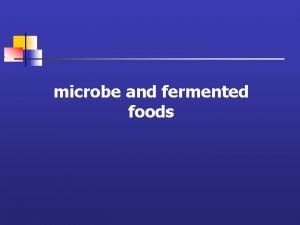Starter Culture and Fermented Milk Dr Sonia Kumari








- Slides: 8

Starter Culture and Fermented Milk Dr. Sonia Kumari Asstt. Prof cum. Jr. Scientist Department of Dairy Microbiology, SGIDT, Patna

Vitamin Metabolism: ØMilk and yoghurts contains both fat and watersoluble vitamins and various antimicrobial compounds synthesized by the starters. ØThe content of these vitamins changes during the growth of starter cultures in fermented milk products preparation. ØThe change in vitamin content could be either an increase or decrease in the finished product as explained below.

INCREASE IN VITAMIN CONTENT • Niacin and folic acid are vitamins which increase during the actual manufacture of yoghurt because they are actively synthesized by the starter cultures. • The increases in folic acid and niacin in yoghurt amounts to 3. 946 and 22 ug/100 g respectively • losses in storage may exceed these gains in due course of time. • Although there is a general agreement that vitamin B 12 decreases during yoghurt production, but some species of Lactobacillus and strains of yoghurt starter culture synthesize vitamin B 12. • S. Thermophilus and Lactobacillus delbrueckii subsp bulgaricus synthesise niacin and folic acid to a lesser degree, than vitamin B 6 during the production of yoghurt.

DECREASE IN VITAMIN CONTENT • Excessive heat treatments of the milk. e. g. boiling for 5 minutes, cause even greater losses of the above vitamins; for example, vitamin B 12 is reduced to 1. 78 ug/liter. • The yoghurt starter bacteria utilize some of the vitamins present in milk during the fermentation period to meet their growth requirement. This factor contributes, to some extent, to a reduction of the nutritional properties of the product. However, the quantities consumed are dependent on the rate of inoculation, the strain of yoghurt starter and the conditions of fermentation. • Some vitamins decrease during the storage of yoghurt at 40 C. During the storage of yoghurt at 50 C for 16 days, loss of folic acid and vitamin B 12 is 28. 6 and 59. 9% respectively. • A decrease in the biotin, niacin and pantothenic acid contents are noticed due to the combined effect of microbial catabolism during the incubation period, and chemical decomposition of these vitamins during cold storage.

BIOSYNTHESIS OF FOLIC ACID (FOLACIN) Ø The "folic acid group" (or "folates") is a generic name given to around ten different compounds which share a basic structural unit connected to "conjugates" of different numbers of glutamic acid residues. Ø Many organisms require folacin as a growth factor. It functions as a coenzyme in many different biochemical reactions, i. e. as an activator and carrier of carbon units during oxidation and it participates in the metabolism of purines, pyrimidiness and some amino acids.

BIOSYNTHESIS OF NIACIN Ø The niacin activity was exhibited by nicotinic acid and nicotinamide. Ø As NAD and / or NADP are essential for many oxidative/reductive biochemical reactions, the niacin synthesized by S. thermophilus and Lactobacillus delbrueckii subsp bulgaricus may originate from nicotinamide fraction arising during formation of NAD and / or NADP. The biosynthesis of these nucleotides involves. Ø The synthesis of a sugar moiety and secondly. Ø The synthesis of the pyrimidine or purine base. Ø alternatively, after this formation of NAD and / or NADP, the nicotinamide fraction could be released as a result of the degradation of these nucleotides. Ø Nicotinic acid is derived by a few bacteria from the metabolism or breakdown of tryptophan, a pathway which is dependent on the availability of certain vitamins, e. g, thiamine, riboflavin and vitamin B 6 to activate the required enzymes. Ø As S. thermophilus and lactobacillus delbrueckii subsp bulgaricus utilizes these vitamins and tryptophan does not accumulate during yoghurst production, it is possible that these organism use the vitamins for the synthesis of niacin.

Biosynthesis of Vitamins B 6 Ø The activity of vitamins B 6 is exhibited equally by the following compounds : pyridoxine, pyridoxal and pyridoxamine. Ø The basis structure of these compounds is similar which consists of a pyridine ring, but they differ in the respect of the radical components. Ø No information is available on the biosynthesis of the pyridine ring in microorganisms, plants or animals Ø The different forms of vitamin B 6 are inter convertible by microorganisms. In view of the limited knowledge of the synthesis of vitamins B 6 are their in general, it is difficult to suggest any possible metabolic pathway by which S. thermophilus and Lactobacillus delbrueckii subsp bulgaricus might synthesis this vitamin.

Thanks
